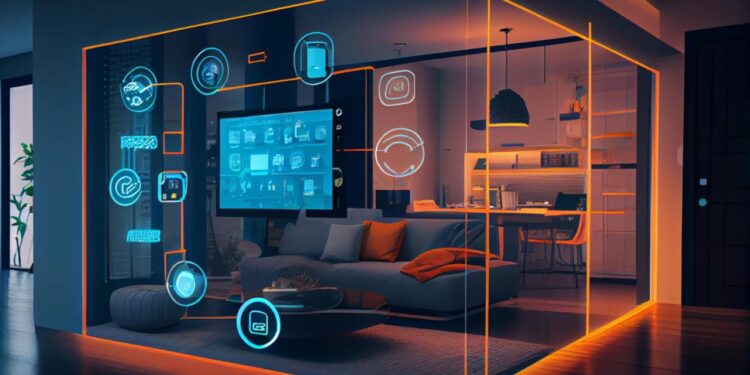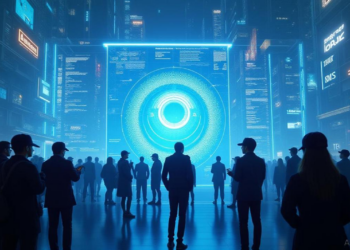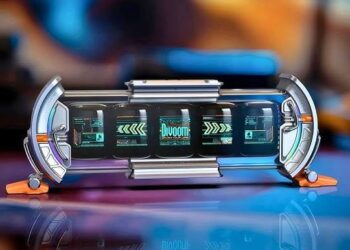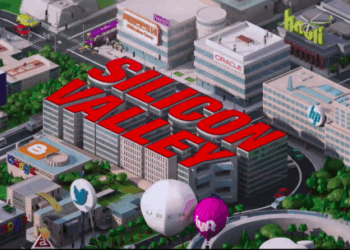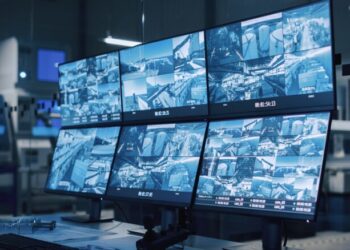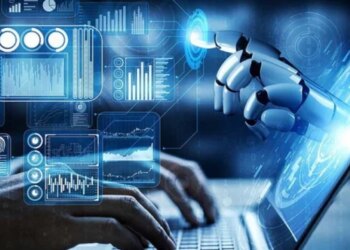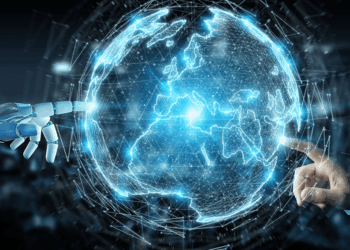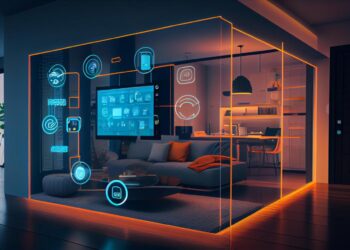The fabric of modern existence is inextricably woven with technology. What began as discrete electronic tools has rapidly evolved into a pervasive, intelligent tapestry known as digital living. This isn’t merely about using gadgets; it’s a fundamental paradigm shift where our homes, workplaces, cities, and personal interactions are increasingly augmented and optimized by seamless connectivity, advanced data insights, and the transformative power of Artificial Intelligence (AI). These digital living advancements promise unprecedented levels of convenience, efficiency, and personalization, reshaping how we experience and navigate the world. This comprehensive article delves into the intricate world of digital living, dissecting its core technological components, the profound benefits it delivers across diverse facets of our lives, the significant challenges it confronts, and the exciting future it promises for human experience.
Defining the Core of Digital Living Advancements

Digital living encompasses the integration of various technologies into our daily routines and environments to create more efficient, convenient, and connected experiences. It’s about moving beyond simply using digital tools to living within a digital ecosystem that anticipates needs and intelligently responds to our presence and preferences.
A. Ubiquitous Connectivity: The foundational layer that enables all other digital living advancements, providing seamless data exchange.
- 5G and Future 6G Networks: Offer ultra-fast speeds, extremely low latency, and massive device connectivity, crucial for real-time applications like augmented reality, autonomous vehicles, and interconnected smart homes.
- Wi-Fi 6E/7: Provides higher bandwidth and lower latency within local networks, supporting the growing density of connected devices in homes and offices.
- Satellite Internet (LEO Constellations): Low Earth Orbit (LEO) satellites are extending high-speed, low-latency internet access to remote and underserved areas, ensuring digital inclusivity.
- Mesh Networks: Technologies like Zigbee and Z-Wave create self-healing, low-power networks for smart home devices, ensuring robust communication even without a strong central Wi-Fi signal.
B. Internet of Things (IoT) and IoMT (Internet of Medical Things): The physical devices embedded with sensors, software, and connectivity that gather and exchange data, forming the tangible points of the digital living network.
- Smart Home Devices: Thermostats, lighting systems, door locks, security cameras, and appliances that can be remotely controlled and often learn user preferences.
- Wearable Technology: Smartwatches, fitness trackers, and health patches that monitor biometric data (heart rate, sleep, activity, SpO2) and provide real-time insights into personal well-being.
- Connected Vehicles: Cars equipped with sensors and communication capabilities for navigation, infotainment, driver assistance, and eventual autonomous driving.
- Smart City Infrastructure: Sensors in streetlights, waste bins, traffic signals, and public spaces for optimizing urban services, monitoring environmental conditions, and enhancing public safety.
- Medical Sensors and Devices: Connected blood pressure monitors, glucose meters, smart pill dispensers, and hospital equipment for remote patient monitoring and enhanced clinical care.
C. Artificial Intelligence (AI) and Machine Learning (ML): The intelligence layer that processes the vast amounts of data generated by connected devices, enabling personalization, prediction, and automation.
- Personalized Learning and Adaptation: AI algorithms learn from user behavior, preferences, and historical data to tailor experiences (e.g., smart home routines, content recommendations, personalized health advice).
- Predictive Analytics: AI can anticipate needs, problems, or trends based on data patterns (e.g., predicting appliance failure, forecasting energy demand, identifying health risks).
- Natural Language Processing (NLP) and Understanding (NLU): Powers voice assistants, allowing for intuitive, conversational interaction with digital systems.
- Computer Vision: Enables devices like smart cameras to “see” and interpret visual information for security, navigation, and contextual awareness.
- Contextual Awareness: AI allows devices to understand the surrounding environment and user’s situation (time of day, location, presence of others) to provide relevant services proactively.
D. Cloud Computing and Edge Computing: The processing and storage infrastructure that supports the massive data flows in digital living.
- Cloud Computing: Provides scalable storage, powerful processing capabilities, and advanced analytics (including AI) for vast amounts of IoT data, accessible from anywhere.
- Edge Computing: Processes data closer to the source (on the device itself or a local gateway) before sending it to the cloud. This reduces latency, saves bandwidth, enhances privacy by processing sensitive data locally, and enables faster real-time responses.
E. Immersive and Interactive Technologies (XR): Technologies that bridge the physical and digital worlds, creating more engaging and experiential interactions.
- Augmented Reality (AR): Overlays digital information onto the real world via smartphones, smart glasses, or head-up displays, enhancing real-world perception with contextual data (e.g., navigation arrows on a street, virtual furniture in your living room).
- Virtual Reality (VR): Creates fully immersive digital environments for entertainment, training, remote work, and social interaction, transporting users to new realities.
- Mixed Reality (MR): Seamlessly blends virtual objects with physical environments, allowing users to interact with both in real-time.
- Haptic Feedback: Providing realistic tactile sensations that enhance immersive experiences and user interaction.
Core Pillars of Digital Living Advancements
The intelligence and connectivity of digital living manifest across various crucial aspects of our daily existence, fundamentally reshaping how we live, work, and interact.
The Intelligent Home
Our residences are evolving from static structures into dynamic, responsive environments.
- Home Automation & Orchestration: Smart hubs and AI seamlessly control lighting, temperature, entertainment, and security systems based on schedules, occupancy, and user preferences.
- Smart Appliances: Refrigerators that track inventory and suggest recipes, ovens controllable remotely, washing machines that optimize cycles, all communicating for convenience and efficiency.
- Energy Management: Smart thermostats and integrated systems learn consumption patterns and adjust energy use to minimize waste and costs, often reacting to real-time energy prices from a smart grid.
- Personalized Ambiance: Lighting and sound systems adjust automatically to mood, time of day, or specific activities, creating tailored atmospheres.
- Advanced Home Security: AI-powered cameras, smart locks, and sensors provide proactive monitoring, distinguishing between real threats and benign events, and offering remote control.
Connected Health and Wellness
Digital living is empowering individuals to take a proactive approach to their health and receive more personalized care.
- Continuous Health Monitoring: Wearable devices and in-home sensors track vital signs (heart rate, blood pressure, sleep patterns, activity levels) continuously, providing real-time data to individuals and, if consented, to healthcare providers.
- Personalized Wellness Coaching: AI analyzes health data to offer tailored advice on exercise, nutrition, stress management, and sleep improvement.
- Remote Patient Monitoring (RPM): For individuals with chronic conditions or those recovering from surgery, connected medical devices transmit data to clinicians, enabling remote oversight, proactive intervention, and reduced hospital visits.
- Telehealth Integration: Seamless virtual consultations with doctors and specialists via integrated communication platforms.
- Smart Medication Management: Devices remind patients to take medication and track adherence.
Smart Mobility and Transportation
Our modes of transport are becoming safer, more efficient, and more enjoyable.
- Connected Vehicles: Cars communicate with each other (V2V), with infrastructure (V2I), and with cloud services, enabling advanced driver-assistance systems (ADAS), real-time navigation updates, and predictive maintenance.
- Autonomous Driving Features: AI-powered systems take over aspects of driving, enhancing safety and reducing driver fatigue, moving towards fully self-driving capabilities.
- Integrated Public Transit: Apps and smart city sensors provide real-time updates on public transport, optimize routes, and facilitate seamless multi-modal journeys.
- Smart Parking: Sensors guide drivers to available parking spots, reducing congestion and wasted time.
- Personal Mobility Devices: Connected e-scooters, e-bikes, and personal transport pods for efficient urban movement.
The Digital Workplace
Offices are evolving into agile, intelligent environments that foster productivity and collaboration.
- Smart Office Spaces: Sensors monitor occupancy, air quality, and lighting, adjusting environment settings automatically for comfort and energy efficiency.
- Hybrid Work Solutions: Integrated video conferencing, collaborative digital whiteboards, and immersive meeting tools (VR/AR) facilitate seamless collaboration between in-office and remote teams.
- AI-Powered Productivity Tools: Smart assistants that manage calendars, transcribe meetings, automate routine tasks, and provide intelligent content recommendations.
- Workplace Wellness Monitoring: Wearables and smart devices can help employees track stress levels, encourage breaks, and promote healthy habits during the workday.
Smart Cities and Public Services
Urban areas are leveraging digital advancements to become more sustainable, efficient, and livable.
- Optimized Urban Planning: Data from IoT sensors helps city planners understand traffic patterns, energy consumption, and environmental conditions to make informed development decisions.
- Efficient Waste Management: Smart bins alert collection services when full, optimizing routes and reducing fuel consumption.
- Responsive Public Safety: Connected surveillance, AI analytics, and optimized emergency response systems enhance citizen safety and rapid incident management.
- Environmental Monitoring: Networks of sensors provide real-time data on air quality, noise pollution, and water levels, informing environmental policies and public health warnings.
- Digital Citizen Engagement: Online platforms and mobile apps provide easier access to government services, public information, and opportunities for civic participation.
The Transformative Benefits of Digital Living Advancements
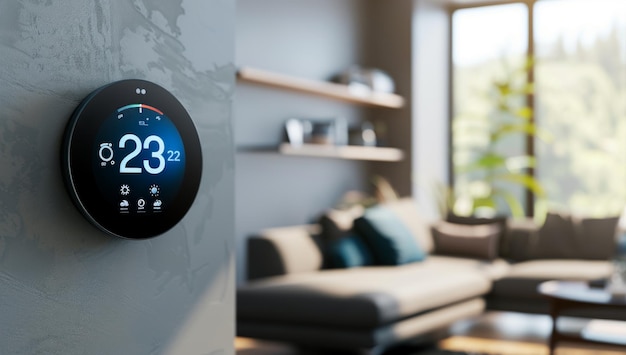
The pervasive integration of digital living technologies offers a multitude of profound advantages that are reshaping individual lives, industries, and societal structures, moving us towards a more intelligent, convenient, and sustainable future.
A. Unparalleled Convenience and Personalization:
- Effortless Automation: Digital living automates routine tasks, from adjusting home temperature to managing appointments, freeing up personal time and mental load.
- Tailored Experiences: Systems learn individual preferences, habits, and needs, providing highly customized environments and services (e.g., personalized content recommendations, adaptive lighting).
- Remote Management: Control and monitor almost any aspect of your environment or personal data from anywhere in the world, enhancing flexibility and peace of mind.
B. Enhanced Efficiency and Resource Optimization:
- Reduced Waste: Smart energy management, intelligent irrigation, and optimized logistics minimize the consumption of resources like electricity, water, and fuel.
- Increased Productivity: Automation in homes and workplaces streamlines tasks, allowing individuals and organizations to achieve more with less effort.
- Predictive Capabilities: AI analyzes data to predict potential issues (e.g., appliance failures, traffic congestion, health risks), enabling proactive interventions that save time and money.
C. Improved Health and Well-being:
- Proactive Health Management: Continuous monitoring through wearables and smart home health devices enables early detection of health issues and supports preventative care.
- Personalized Wellness Coaching: AI-driven insights provide tailored advice on diet, exercise, and stress management, promoting healthier lifestyles.
- Accessible Healthcare: Telehealth and remote patient monitoring bridge geographical gaps, providing access to quality care for more people, especially vulnerable populations.
D. Greater Safety and Security:
- Intelligent Monitoring: AI-powered security systems (home, commercial, public) can differentiate between real threats and false alarms, providing more accurate and timely alerts.
- Faster Emergency Response: Automated detection of incidents (fires, falls, intrusions) and data sharing with emergency services can significantly reduce response times.
- Enhanced Public Safety: Smart city initiatives contribute to safer urban environments through optimized traffic management, environmental monitoring, and intelligent surveillance.
E. New Economic Opportunities and Business Models:
- Innovation Ecosystems: The growth of digital living fosters innovation, creating new products, services, and entire industries.
- Service-Oriented Economy: A shift from product sales to recurring service subscriptions (e.g., smart home security subscriptions, personalized health plans).
- Data Monetization: Anonymized and aggregated data from connected devices can be leveraged to generate new insights and revenue streams for businesses.
- Job Creation: The digital living sector creates new jobs in hardware development, software engineering, data analytics, cybersecurity, and service delivery.
F. Environmental Sustainability:
- Reduced Carbon Footprint: Optimized energy consumption in smart homes and cities, efficient transportation, and smart agriculture all contribute to lower greenhouse gas emissions.
- Resource Conservation: Precise management of water, electricity, and other resources minimizes waste and promotes sustainable living.
- Circular Economy: Digital technologies can support better recycling, reuse, and resource recovery throughout product lifecycles.
Navigating the Challenges of Digital Living Advancements
Despite the extraordinary promise, the widespread and ethical implementation of digital living advancements faces several significant hurdles that demand careful consideration, robust frameworks, and proactive strategies.
A. Data Privacy and Security Risks:
- Vast and Intimate Data Collection: Digital living relies on collecting massive amounts of often highly sensitive personal data (location, health, habits, biometric, voice recordings). Ensuring the robust privacy and security of this data against breaches and misuse is paramount.
- Vulnerability of IoT Devices: Many connected devices are designed with insufficient security, making them easy targets for cyberattacks. A compromised device can serve as a gateway to broader networks or enable surveillance.
- Lack of Transparency and Control: Users often lack clear understanding or granular control over what data is collected by their devices, how it’s used, and with whom it’s shared, leading to erosion of trust.
- DDoS Attacks and Botnets: Large numbers of insecure IoT devices can be leveraged by malicious actors to launch massive Distributed Denial of Service (DDoS) attacks, crippling internet services.
B. Interoperability and Standardization:
- Fragmented Ecosystem: The digital living market is highly fragmented, with numerous manufacturers, diverse communication protocols (Wi-Fi, Zigbee, Z-Wave, Bluetooth, Thread, Matter), and proprietary platforms.
- Lack of Universal Standards: The absence of common communication protocols and data formats makes it difficult for devices from different brands to communicate seamlessly, leading to a disjointed user experience and vendor lock-in.
- Complex Integration: Building a truly cohesive and intelligent digital living environment from disparate devices can be technically challenging and costly for consumers and businesses alike.
C. Digital Divide and Equity in Access:
- Unequal Access to Infrastructure: Not all populations, especially in rural or low-income areas, have access to reliable high-speed internet, which is fundamental for many digital living advancements.
- Affordability of Devices: The cost of smart devices and recurring subscription fees can be prohibitive for lower-income households, exacerbating existing societal inequalities.
- Digital Literacy Gap: A lack of digital skills and comfort with technology can prevent individuals from effectively using and benefiting from digital living solutions.
D. Ethical and Societal Implications:
- Algorithmic Bias: AI systems powering digital living, if trained on biased data, can perpetuate or amplify societal biases in recommendations, access, or automated decision-making.
- Over-reliance and Deskilling: Excessive reliance on intelligent automation might diminish human critical thinking, problem-solving skills, and basic practical abilities.
- Social Isolation: While facilitating virtual connection, a hyper-digitalized existence could potentially reduce face-to-face interaction and contribute to social isolation for some individuals.
- Surveillance Capitalism: The business models underpinning many digital living services can raise concerns about pervasive data collection and its use for commercial exploitation rather than user benefit.
E. Regulatory and Legal Frameworks:
- Lagging Legislation: Laws and regulations often struggle to keep pace with the rapid advancements in IoT, AI, and data collection, leading to legal ambiguities regarding responsibility, consumer protection, and data ownership.
- International Harmonization: Managing digital living deployments across different jurisdictions with varying laws and cultural norms adds significant complexity for global providers.
- Product Liability: Determining who is liable when an AI-powered device malfunctions or causes harm (manufacturer, software developer, platform provider) is a complex and evolving legal challenge.
F. Reliability and Energy Consumption:
- System Dependencies: Digital living relies heavily on stable power and network connectivity. Outages can render many smart features ineffective, leading to frustration.
- Energy Footprint: The collective energy consumption of billions of always-on connected devices, cloud servers, and data centers can be substantial, raising environmental concerns if not powered by renewable sources.
- E-Waste: The rapid upgrade cycles and planned obsolescence of consumer electronics contribute significantly to electronic waste, posing environmental disposal challenges.
The Future Trajectory of Digital Living
The evolution of digital living is a continuous process, pointing towards an even more deeply integrated, intelligent, and human-centric future where technology seamlessly supports and enhances every aspect of our lives.
A. Ambient Intelligence and Invisible Computing: Digital living will become increasingly pervasive yet largely invisible. Technology will recede into the background, integrated into surfaces, clothing, and the environment, proactively assisting us without requiring conscious interaction with screens or buttons.
B. Hyper-Personalized Digital Twins: Individuals will have comprehensive “digital twins” – real-time virtual representations of their physical selves, health, activities, and preferences, fueled by data from ubiquitous sensors and advanced AI. These twins will enable predictive health insights, personalized learning, and optimized daily routines across all domains.
C. Proactive and Context-Aware AI: AI will move beyond reactive responses to truly anticipate needs based on deep contextual understanding (location, time, mood, presence of others). Your home might adjust lighting for a specific activity you’re about to start, or your car might proactively suggest alternative routes based on your stress levels.
D. Seamless Integration of XR (Extended Reality): AR and MR will blend digital information so seamlessly into our physical world (via smart glasses, contact lenses, or holographic projections) that the distinction between real and virtual will blur, enhancing work, education, and entertainment.
E. Decentralized Digital Identity and Data Ownership: Blockchain and Web3 technologies will empower individuals with greater control over their digital identities and personal data, enabling selective sharing and reducing reliance on centralized entities.
Conclusion
The advancement of digital living is not just about adopting new technologies; it’s about fundamentally reshaping our relationship with the world around us. While navigating the complex challenges related to privacy, equity, and ethical AI will be crucial, the immense potential for a more convenient, efficient, safer, and ultimately more fulfilling human experience makes this intelligent transformation an undeniable force shaping our collective future.

